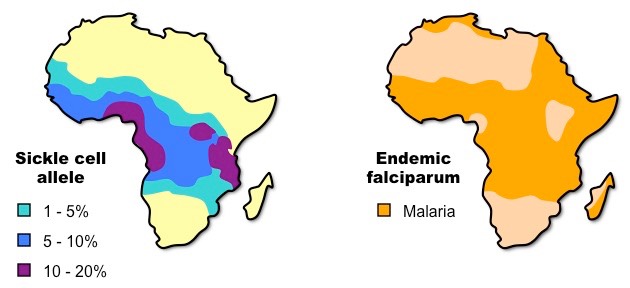D.2.1 Define allele frequency and gene pool
Allele Frequency: The proportion of an allele within a population
Gene Pool: The sum total of alleles present in a sexually reproducing population
D.2.2 State that evolution involves a change in allele frequency in a population's gene pool over a number of generations
By natural selection, alleles encoding for beneficial adaptations will confer a survival advantage and lead to improved reproduction
These alleles are more consequently more likely to be inherited and thus the population's gene pool will change over generations
D.2.3 Discuss the definition of the term species
A species is a population whose members have the potential to interbreed to produce fertile, viable offspring
- They are therefore unable to produce fertile offspring with members of a different species
- Hybrids are individuals produced by cross-breeding between two different species, and are reproductively sterile (e.g. ligers, mules)
There are a number of caveats to this biological explanation of species:
- Certain organisms (e.g. bacteria) do not reproduce sexually (although may transfer genetic information via conjugation)
- Some organisms are only known through fossil records, making it impossible to ascertain breeding capacity
- Geographically isolated organisms may never come into contact, meaning there is no information regarding their ability to interbreed
- It may be physically impossible for some members of the same species to mate (e.g. different dog breeds)
- Some species spread around an area to form interlinked breeding populations whereby the population 'ends' cannot interbreed (ring species)
Ring Species

D.2.4 Describe three examples of barriers to gene pools
There are two main categories of reproductive isolation barriers:
- Prezygotic isolation - before fertilisation occurs (no offspring are produced)
- Postzygotic isolation - after fertilisation occurs (offspring is either not viable or infertile)

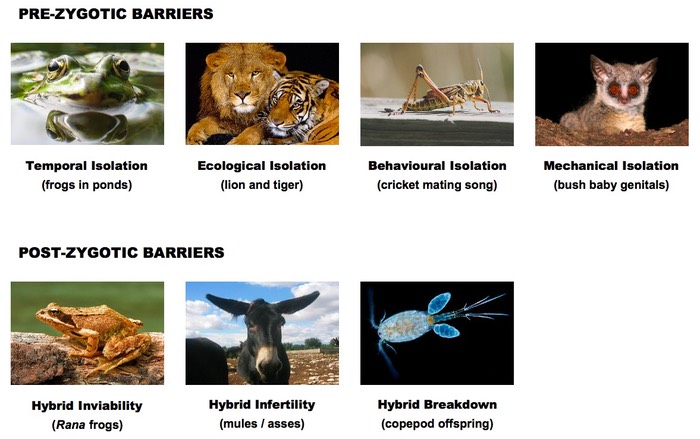
D.2.5 Explain how polyploidy can contribute to speciation
Polyploidy is a condition in which an organism has more than two complete sets of chromosomes in all somatic cells (i.e. > diploid)
It is far more common in plant species as they lack separate sexes and are capable of asexual reproduction (self-pollination)
It may occur as a result of the failure of a meiotic cell to undergo cytokinesis (so chromosome replication occurs minus cell division)
Consequently gametes are diploid (2n) and resulting offspring are tetraploid (4n)
Because tetraploid offspring can no longer mate with diploid organisms (triploid offspring tend to be infertile), speciation has occurred
Polyploidy

D.2.6 Compare allopatric and sympatric speciation
Similarities:
- Both involve the formation of a new species via isolation of the genetic pool from an existing species
- Both occur when natural selection creates genetic divergence between the new and ancestral populations
Differences:

Allopatric Speciation versus Sympatric Speciation
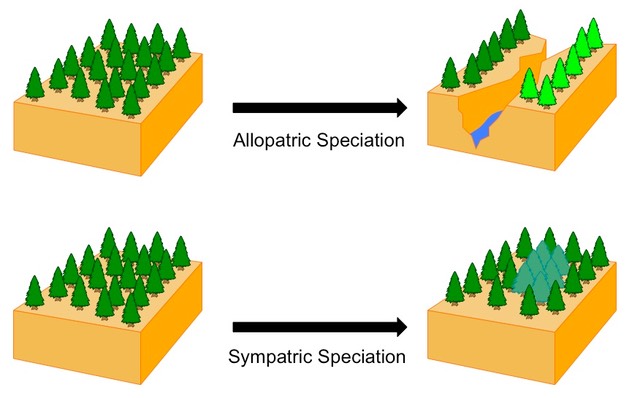
D.2.7 Outline the process of adaptive radiation
Adaptive radiation describes a rapid evolutionary diversification of a single ancestral lineage
It occurs when members of a single species occupy a variety of niches with different environmental selection pressures
Consequently, members evolve different morphological adaptations as a result of natural selection
Adaptive radiation results in speciation (many species from an ancestral line) and may be further enhanced by reproductive isolation
An example of adaptive radiation can be seen in the variety of beaks seen in the Galapagos finches
Adaptive Radiation
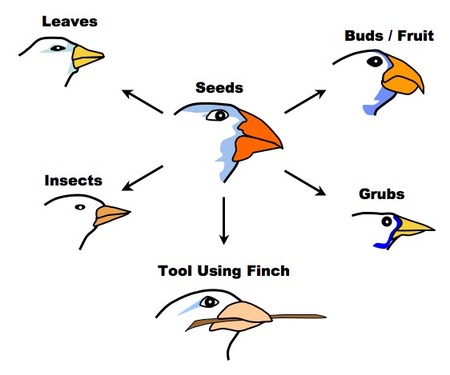
D.2.8 Compare convergent and divergent evolution
Similarities:
- Both explain the presence of similar structures in different organisms
Differences:

D.2.9 Discuss ideas on the pace of evolution, including gradualism and punctuated equilibrium
Gradualism
- Continuous change at a constant pace over a long period of time
- Arises as a result of the gradual accumulation of mutations / variations
- Examples in the fossil record of gradual change with intermediate forms support this theory
- An example is the evolution of the modern horse (gradual change in size and foot structure with changing habitat)
Punctuated equilibrium
- Evolution proceeds rapidly in bursts for short periods of time, intermittent with long periods of stability
- In periods of stability organisms become well suited to the environment, with natural selection acting to maintain characteristics
- Equilibrium is punctuated by a rapid environmental change (e.g. volcanic eruption, meteor impact) which leads to directional selection
- Gaps in the fossil record and the lack of intermediate forms for many species support this theory
- Strata in the fossil record that show the appearance of many new species following a mass extinction support this theory
Different Theories on the Pace of Evolution
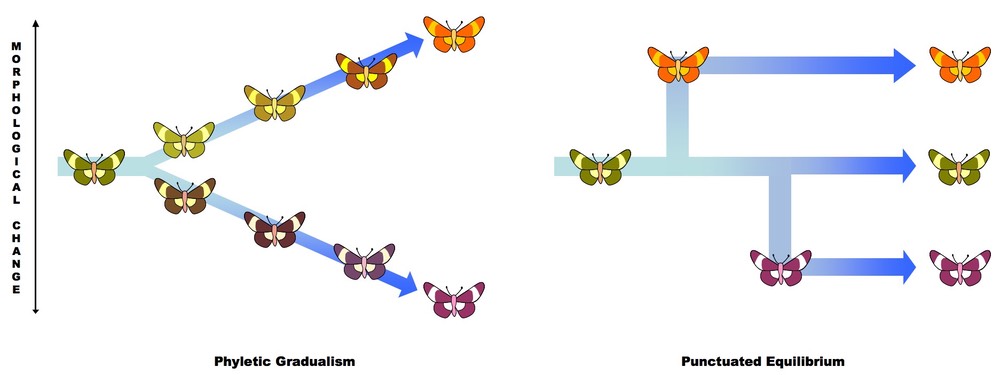
D.2.10 Describe one example of transient polymorphism
A polymorphism is the occurrence of two or more clearly different phenotypes within the same population of a species - it reflects the effects of more than one allele in the gene pool
Transient Polymorphism
- A situation when there are two alleles in a gene pool (polymorphic) and one allele is gradually replacing another
- This is due to a strong environmental selective pressure causing directional selection to eliminate one allele
- Example: Industrial melanism or antibiotic resistance in bacteria (refer to dot point 5.4.8 for more detail)
D.2.11 Describe sickle cell anaemia as an example of balanced polymorphism
Balanced Polymorphism
- A situation when there are two alleles in a gene pool (polymorphic) and the frequency of the two alleles in not changing
- Occurs when selective pressures promote the coexistence of the two alleles (i.e. heterozygous advantage) causing a stabilising selection
Example: Sickle Cell Anaemia
- Sickle cell anaemia is controlled by a single gene mutation (refer to dot point 4.1.4 for more detail)
- Individuals homozygous for the sickle cell allele have abnormally shaped red blood cells that lead to pronounced health complications
- Individuals homozygous for the normal blood cell allele are highly susceptible to malarial infection
- In areas where malaria is common, heterozygous individuals experience an advantage over either form of homozygote
- These individuals are more likely to survive and reproduce, leading to a balance in the frequency of the two alleles (heterozygous advantage)
Correlation between Incidence of Sickle Cell Allele and Malaria
